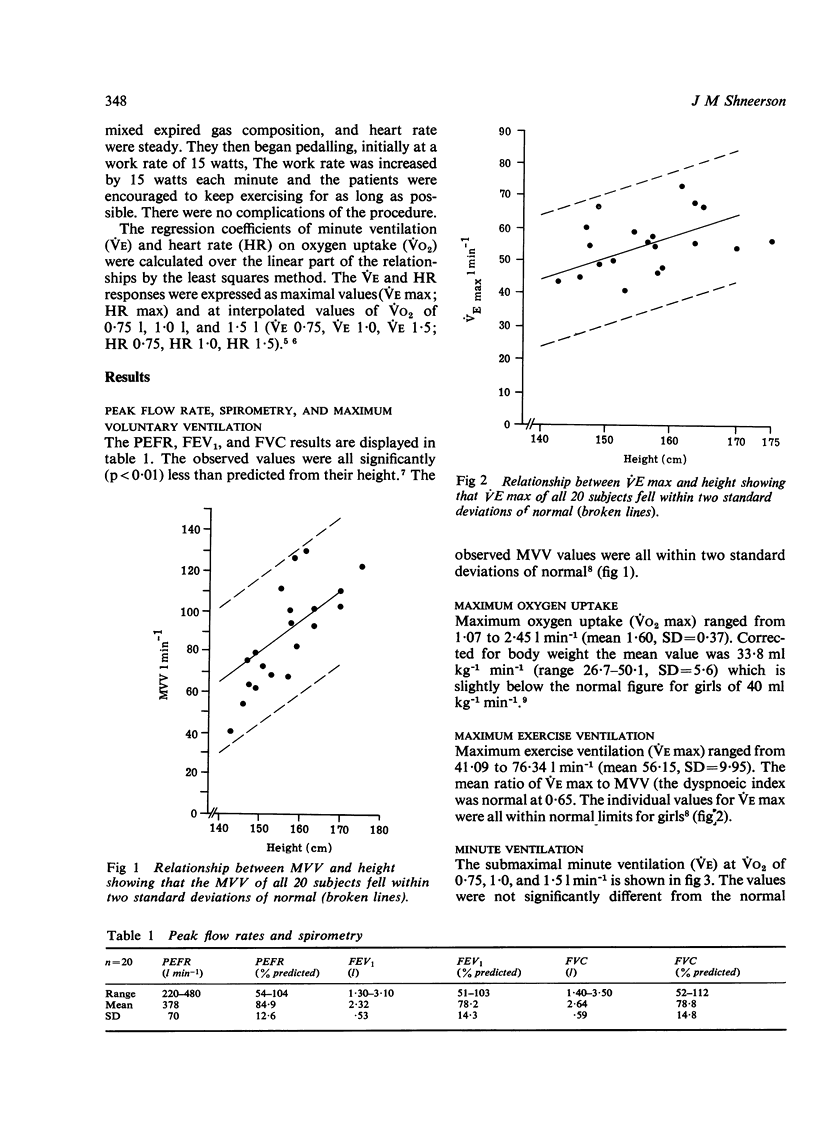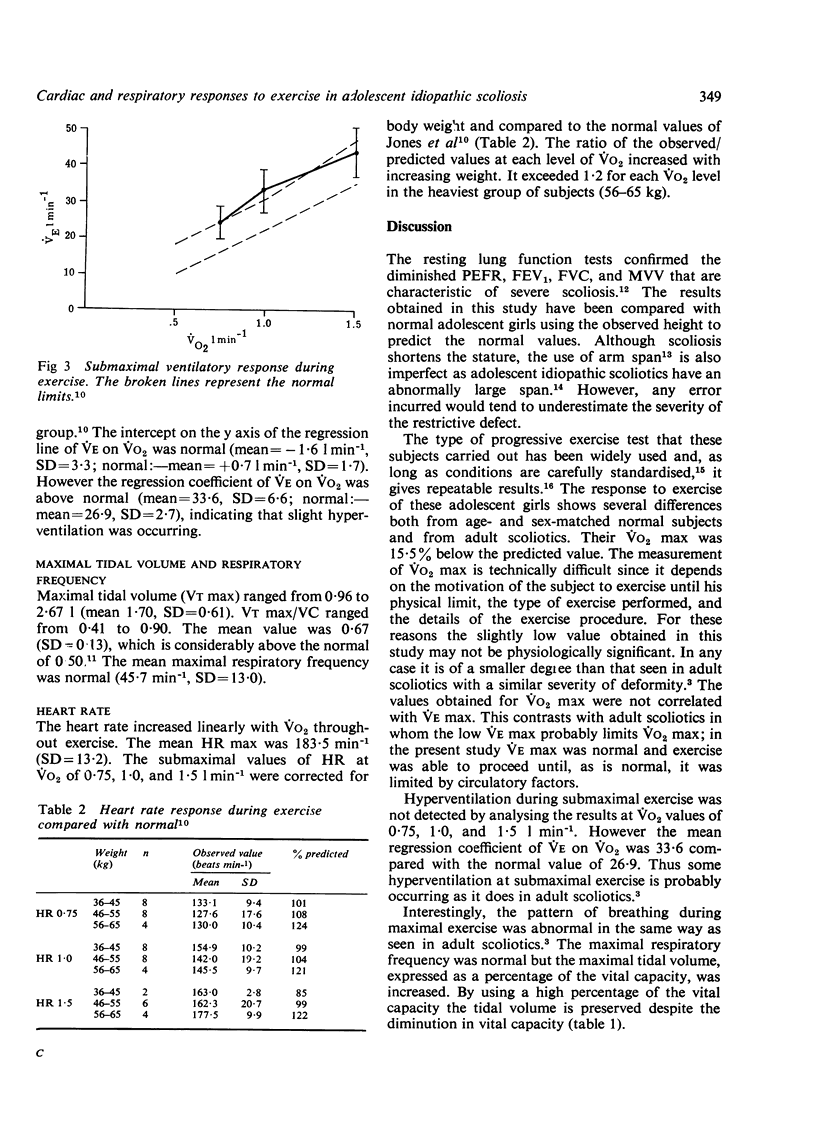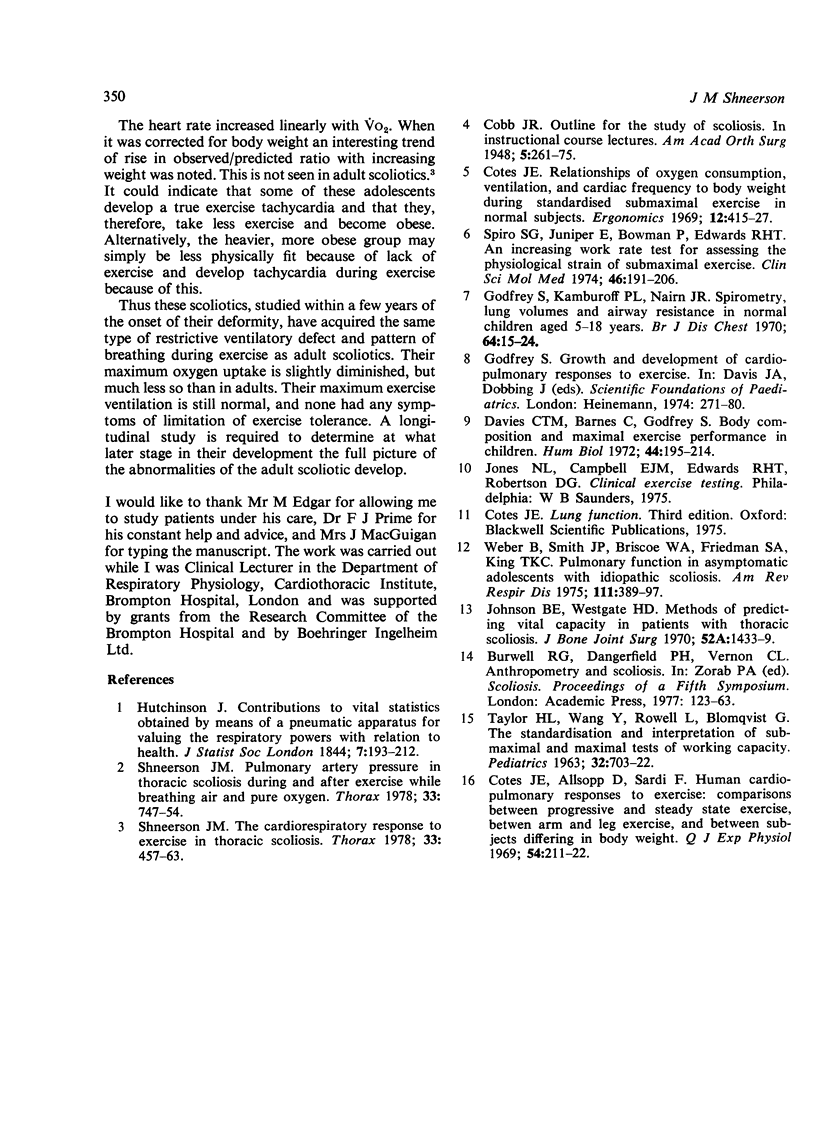Abstract
Twenty girls, aged 11-15 years, with adolescent idiopathic scoliosis were studied before spinal fusion was performed. Each underwent a range of lung function tests and a standardised progressive exercise test on a bicycle ergometer. The resting lung function tests showed reduced peak flow rates, lung volumes, and maximum voluntary ventilation. The maximum oxygen uptake was slightly diminished but maximum exercise ventilation was normal. The latter was achieved by using a greater than normal fraction of the vital capacity in tidal breathing while exercising. Mild hyperventilation during submaximal exercise and a trend towards an exercise tachycardia with increasing body weight were observed.
Full text
PDF



Selected References
These references are in PubMed. This may not be the complete list of references from this article.
- Cotes J. E., Allsopp D., Sardi F. Human cardiopulmonary responses to exercise: comparisons between progressive and steady state exercise, between arm and leg exercise, and between subjects differing in body weight. Q J Exp Physiol Cogn Med Sci. 1969 Apr;54(2):211–222. doi: 10.1113/expphysiol.1969.sp002019. [DOI] [PubMed] [Google Scholar]
- Cotes J. E. Relationships of oxygen consumption, ventilation and cardiac frequency to body weight during standardized submaximal exercise in normal subjects. Ergonomics. 1969 May;12(3):415–427. doi: 10.1080/00140136908931065. [DOI] [PubMed] [Google Scholar]
- Davies C. T., Barnes C., Godfrey S. Body composition and maximal exercise performance in children. Hum Biol. 1972 May;44(2):195–214. [PubMed] [Google Scholar]
- Godfrey S., Kamburoff P. L., Nairn J. R. Spirometry, lung volumes and airway resistance in normal children aged 5 to 18 years. Br J Dis Chest. 1970 Jan;64(1):15–24. doi: 10.1016/s0007-0971(70)80045-6. [DOI] [PubMed] [Google Scholar]
- Johnson B. E., Westgate H. D. Methods of predicting vital capacity in patients with thoracic scoliosis. J Bone Joint Surg Am. 1970 Oct;52(7):1433–1439. [PubMed] [Google Scholar]
- Shneerson J. M. Pulmonary artery pressure in thoracic scoliosis during and after exercise while breathing air and pure oxygen. Thorax. 1978 Dec;33(6):747–754. doi: 10.1136/thx.33.6.747. [DOI] [PMC free article] [PubMed] [Google Scholar]
- Shneerson J. M. The cardiorespiratory response to exercise in thoracic scoliosis. Thorax. 1978 Aug;33(4):457–463. doi: 10.1136/thx.33.4.457. [DOI] [PMC free article] [PubMed] [Google Scholar]
- Spiro S. G., Juniper E., Bowman P., Edwards R. H. An increasing work rate test for assessing the physiological strain of submaximal exercise. Clin Sci Mol Med. 1974 Feb;46(2):191–206. doi: 10.1042/cs0460191. [DOI] [PubMed] [Google Scholar]
- TAYLOR H. L., WANG Y., ROWELL L., BLOMQVIST G. THE STANDARDIZATION AND INTERPRETATION OF SUBMAXIMAL AND MAXIMAL TESTS OF WORKING CAPACITY. Pediatrics. 1963 Oct;32:SUPPL–722. [PubMed] [Google Scholar]
- Weber B., Smith J. P., Briscoe W. A., Friedman S. A., King T. K. Pulmonary function in asymptomatic adolescents with idiopathic scoliosis. Am Rev Respir Dis. 1975 Apr;111(4):389–397. doi: 10.1164/arrd.1975.111.4.389. [DOI] [PubMed] [Google Scholar]


